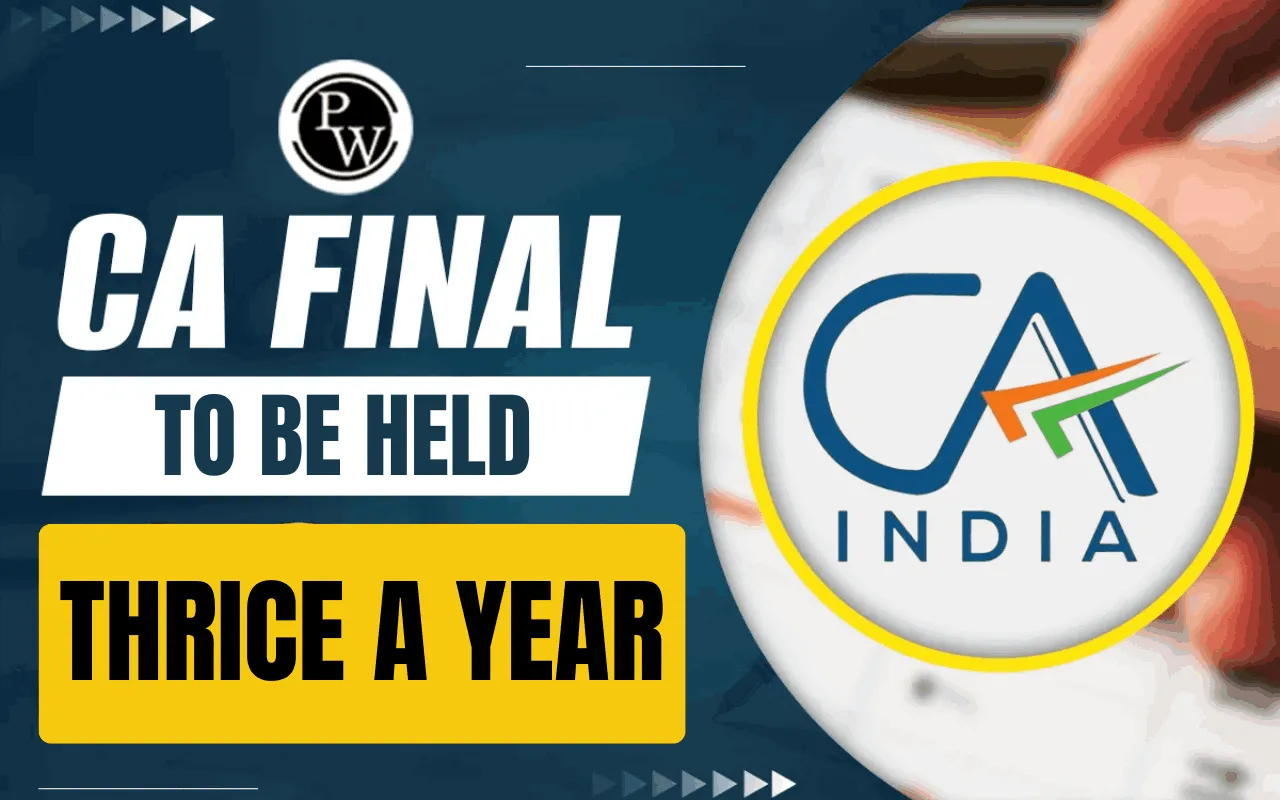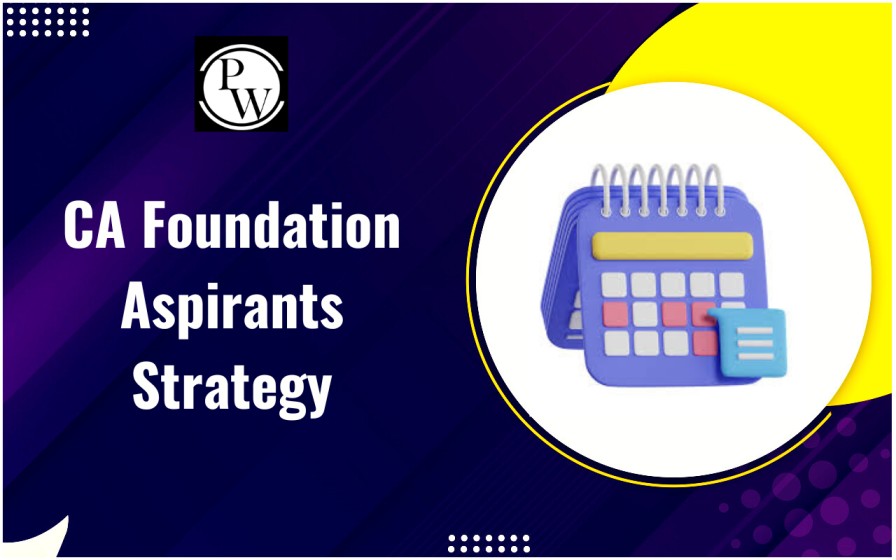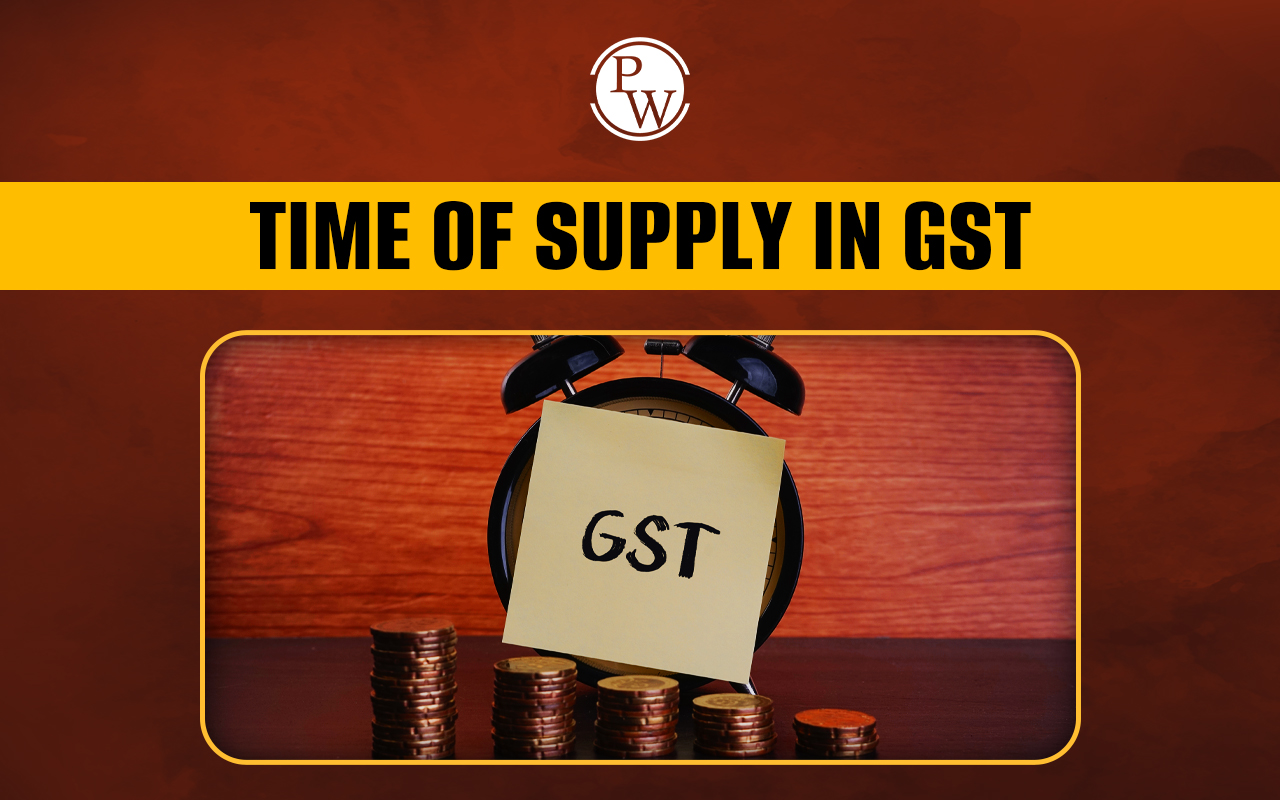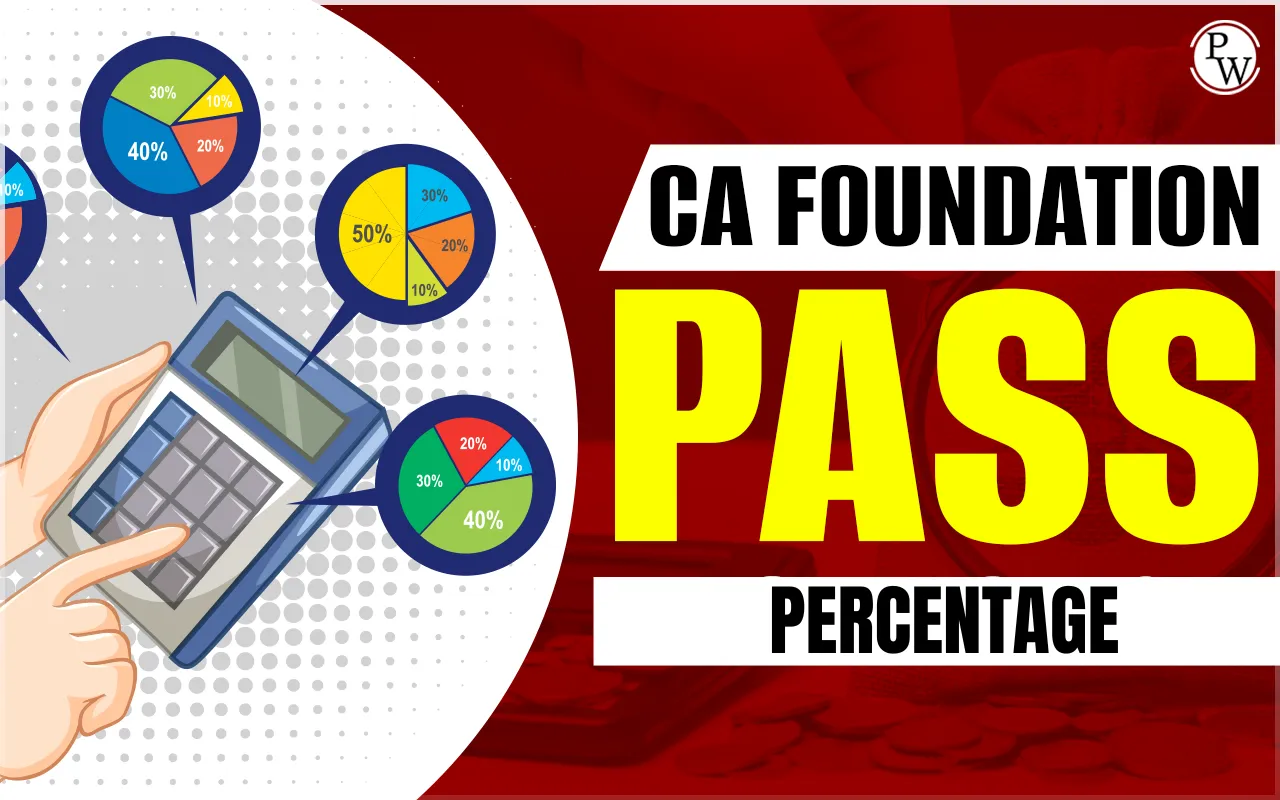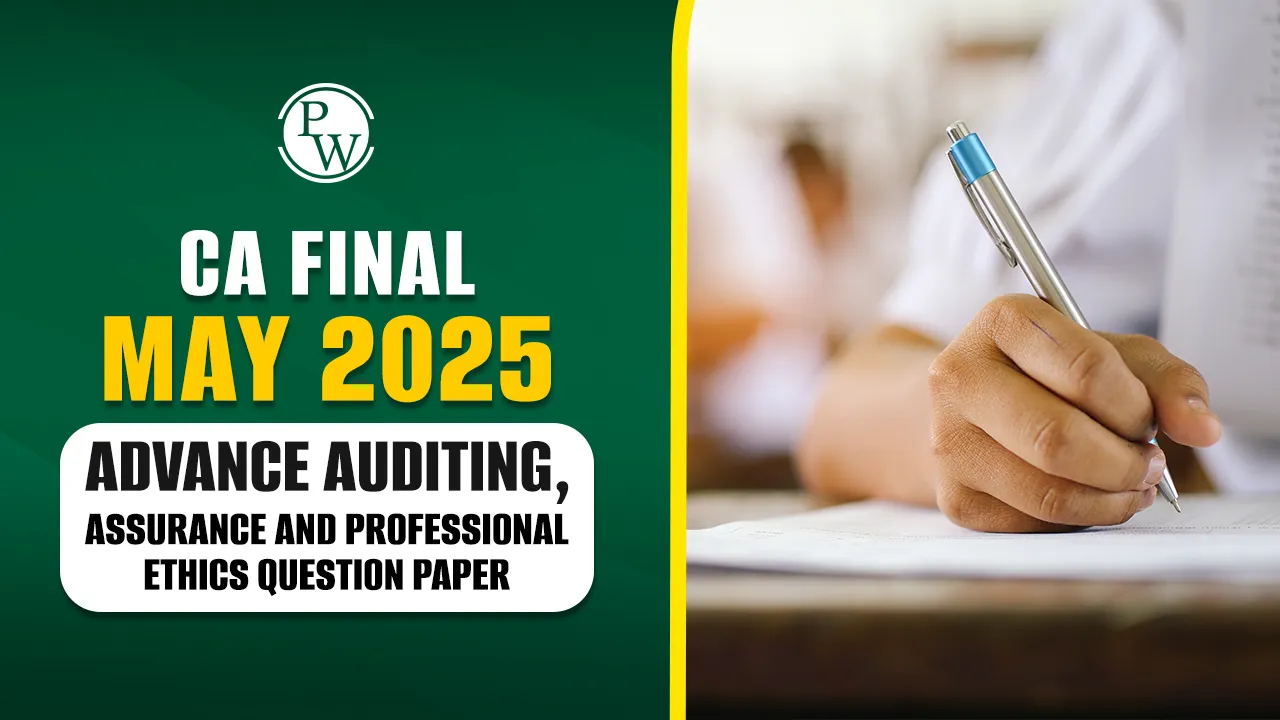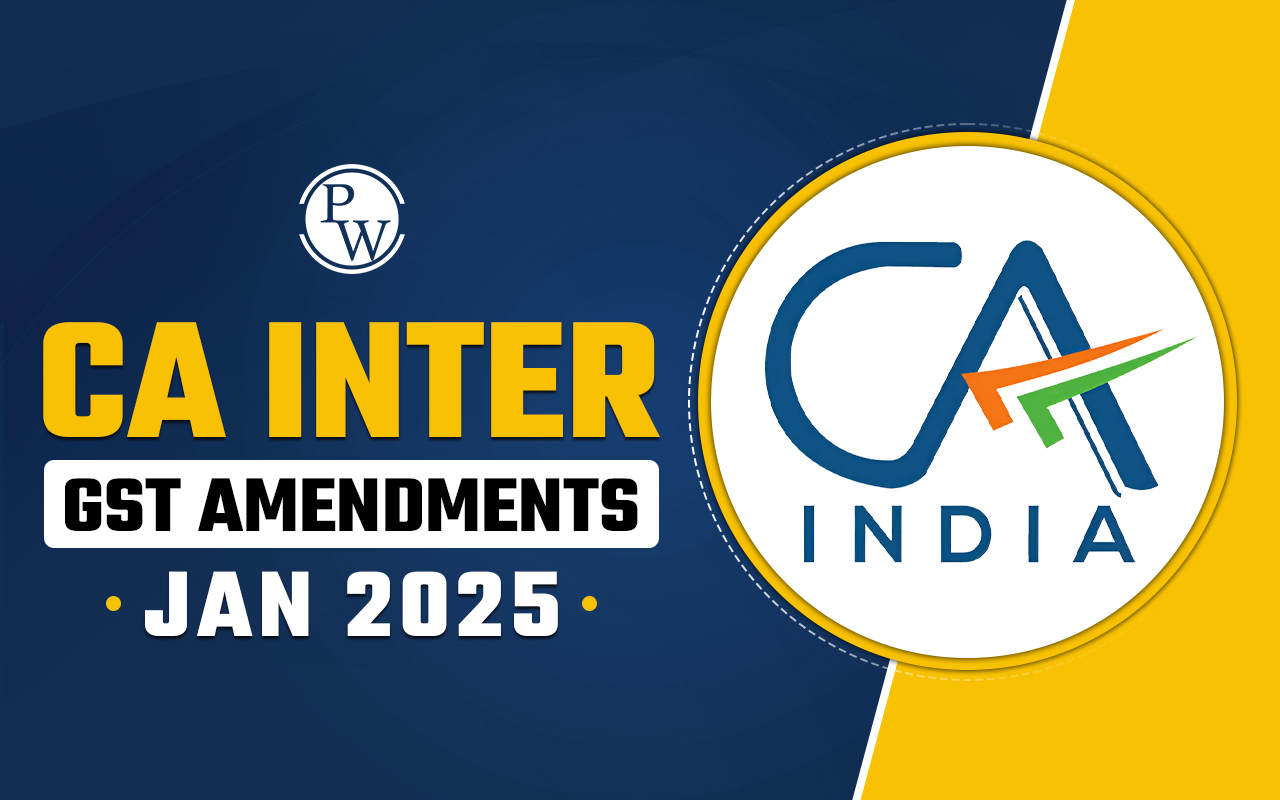

Indirect Tax Section, Rules, Circular Reference: The function of indirect taxation in India plays a crucial role in terms of revenue generation from sales and the cost of goods and services. Unlike direct taxes that are imposed on income, indirect taxes are included in the cost of products and services that consumers purchase. GST is considered the most significant indirect tax in India. GST has revolutionised the taxation landscape as it contributes substantially to government revenue.
GST circulars are issued by the official department to provide clarifications to a large number of stakeholders and communicate decisions taken by the authorities. Indirect tax and GST have become a key topic in both CA Inter and CA Final examinations. Therefore, students and professionals must understand its comprehensive framework for academic and professional success.
This article provides a detailed overview of the rules and regulations of Goods and Services Tax (GST) in India, including various aspects such as supply, charge, composition scheme, and related circulars.
Overview of Indirect Tax Section for CA Preparation
The indirect tax GST framework comprises 25 major sections. The table below presents the key topics of indirect tax for CA preparation:
| Indirect Tax Important Topics for CA Preparation | |
| Chapter No. | Chapter Name |
| 1 | Supply Under GST |
| 2 | Charge of GST |
| 3 | Composition Scheme |
| 4 | Time of Supply |
| 5 | Place of Supply |
| 6 | Value of Supply |
| 7 | Input Tax Credit |
| 8 | Registration under GST |
| 9 | Documentation & E-Way Bill |
| 10 | Accounts, Records & Audit |
| 11 | Returns Under GST |
| 12 | Payment of Taxes, TDS & TCS |
| 13 | Refund Under GST |
| 14 | Assessment & Audit Under GST |
| 15 | Inspection Under GST |
| 16 | Demand & Recovery Under GST |
| 17 | Advance Ruling |
| 18 | Liability in Special Cases |
| 19 | Appeal & Revision |
| 20 | Offences & Penalties |
| 21 | Job Work & Miscellaneous Provisions |
| 22 | All Numerical Days/Hours/Months in GST |
| 23 | Aggregate Turnover & Monetary Limits |
| 24 | Important Monetary Limits |
| 25 | Interest Rate Chart |
Supply Under GST Regulations
The determination of supply is crucial for the taxation of transactions under GST. It includes considerations for both goods and services as well as specific activities treated as supply even without consideration.
Here are the key provisions of supply under GST:
-
Section 7(1)(a): Defines supply as involving consideration and business.
-
Section 7(1)(b): Covers import of services for consideration.
-
Section I: Lists activities treated as supply without consideration.
-
Section II: Differentiates between the supply of goods and services.
-
Section 7(2): Identifies activities not treated as supply.
Charge of GST Responsibilities
This section outlines who is responsible for paying GST under different circumstances, including intra-state and inter-state transactions. It specifies the roles of suppliers and recipients in various scenarios.
Here are the key rules and provisions of GST responsibilities:
-
CGST Act Section 9(1): Supplier pays CGST on intra-state supplies, excluding liquor.
-
IGST Act Section 5(1): Supplier pays IGST on inter-state supplies, excluding liquor.
-
Section 9(3) and 5(3): Recipients pay tax on notified services.
-
Section 9(4) and 5(4): Specific purchases from unregistered persons attract GST.
Composition Scheme for Small Taxpayers
The Composition Scheme simplifies GST compliance for small taxpayers, allowing them to pay tax at a lower rate. It is designed for businesses with an aggregate turnover that does not exceed specified limits. This limit varies according to state.
Here are the notable regulations of the small taxpayer composition scheme:
-
Section 10(1): Tax rate under the scheme is lower, with a turnover limit of Rs 1.5 crore or Rs 75 lakhs in certain states.
-
Section 10(2): Eligibility criteria for opting into the scheme.
-
Section 10(4): Composition suppliers cannot collect tax or avail ITC.
-
Circular 77/51/2018: This circular clarifies that when a taxpayer is found ineligible for the Composition Scheme under GST due to contravention of the CGST Act or Rules, the denial of the scheme can be made effective from a backdate. However, the effective date of denial cannot be earlier than the date of contravention. This ensures that the taxpayer is held liable only from the point of non-compliance, not before.
Time of Supply Determination
The Time of Supply is critical for determining when GST liability arises for goods and services. It establishes the point at which tax becomes payable.
Crucial governing provisions of the time of supply are:
-
CGST Act Section 12: Governs time of supply for goods.
-
CGST Act Section 13: Governs time of supply for services.
-
Provisions for advance payments and RCM are included.
-
Clarifications on specific projects and services are provided in recent circulars.
Place of Supply Significance
The Place of Supply determines which government receives GST revenue that impacts tax distribution. It includes specific rules for goods and services based on their movement and location.
Important sections concerning the place of supply are:
-
IGST Act Section 10: Defines place of supply for goods.
-
Section 12 and 13: Establishes place of supply for services based on location.
-
Circulars provide clarifications on specific scenarios, such as high sea sales and software services.
Value of Supply Calculation
The Value of Supply is essential for determining the taxable amount under GST. This includes various components that contribute to the total value. It outlines how to calculate the value based on different scenarios.
Here are the key valuation rules:
-
Section 15(1): Transaction value is the basis for valuation.
-
Section 15(2): Includes taxes, incidental expenses, and penalties in the value.
-
Specific rules for related persons and non-monetary considerations are also considered.
-
Circulars clarify the taxability of discounts and other specific cases.
Input Tax Credit (ITC) Provisions
ITC allows businesses to reduce their GST liability by claiming credit for GST paid on purchases. However, these are subject to conditions, including invoices must be proper, goods/services must be received, and payment must be made. It is a vital aspect of GST compliance for businesses.
Here is the key framework of input tax credit CA aspirants must know:
-
Section 16: Outlines conditions for availing ITC.
-
Rules 36-37A: Detail documentary requirements and reversal conditions.
-
Section 17: Explains apportionment and blocked credits.
-
Circulars provide clarifications on ITC utilisation and special circumstances.
GST Registration Requirements
Registration is compulsory for businesses crossing a certain turnover threshold (INR 20 to INR40 lakh depending on the state and nature of business). It’s also mandatory in certain cases like interstate supply or e-commerce participation. The process involves applying, verifying documents, and receiving a GSTIN.
Notable GST registration provisions include the following:
-
Section 22: Identifies persons liable for registration.
-
Section 24: Compulsory registration in certain cases.
-
Rules detail the application process and verification.
-
Circulars clarify procedures for casual taxable persons and other specific cases.
|
Also Read |
| CA Final Indirect Tax Laws Study Plan |
| CA Final Indirect Tax |
| Taxation for CA Intermediate |
| Supply Under GST |
Indirect Tax Section, Rules, Circular Reference FAQs
What are the 4 indirect taxes?
What is the act of indirect tax?
What is Section 77 of the IGST Act 2017?
What is the difference between Section 77 and 78?
What is the difference between Section 67 and 71 of the CGST Act?






